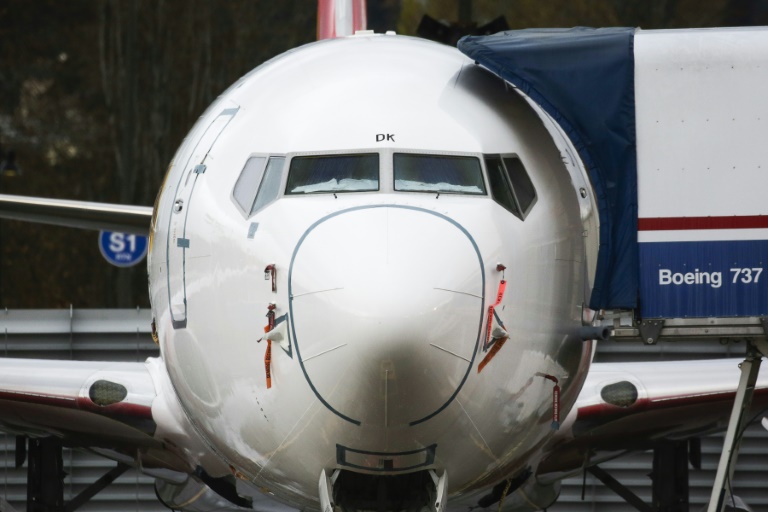Mired in crisis, Boeing reports another loss

Boeing reported another loss as it slows output in response to safety concerns
New York – Troubled aviation giant Boeing reported a first-quarter loss of $343 million on Wednesday, reflecting recent safety troubles that have slowed production and deliveries.
Boeing said it tempered production in the 737 program following a January near-catastrophic incident on an Alaska Airlines jet that has sparked heavy scrutiny from Washington and among Boeing’s airline customers.
The first-quarter loss, which was somewhat smaller than analysts expected, compared with a loss of $414 million in the year-ago period. Revenues fell 7.5 percent to $16.6 billion.
Despite the loss, shares rallied after the company’s CEO confirmed Boeing would meet key financial targets by the end of 2026.
Boeing’s commercial airplane business suffered an operating loss as the company pointed to unspecified “customer considerations” following a temporary grounding of the 737 MAX 9.
Boeing’s defense space and security division reported operating profitability in spite of losses on “certain fixed-price development programs,” the company said in its press release.
“Our first quarter results reflect the immediate actions we’ve taken to slow down 737 production to drive improvements in quality,” said Chief Executive Dave Calhoun, who will step down at the end of 2024.
The extra time taken “will position us for a stronger and more stable future,” Calhoun said.
Despite the drag in the near-term in which it is burning through billions of dollars in cash, Calhoun confirmed to CNBC that the company still forecasts enough of a recovery to maintain its target $10 in annual free cash flow in 2025 or 2026.
“This will cost us six months,” Calhoun told the network. “I still believe it’ll happen in that two-year period.”
Boeing originally set the target in November 2022 when it appeared to be exiting the troubles with the MAX.
– Capitol Hill scrutiny –
The US aerospace giant has been on the defensive since the January 5 emergency landing on the Alaska Airlines plane after a panel on the fuselage blew out mid-flight.
The incident has undermined Boeing’s contention that it was making progress in turning around its operations after two fatal 737 MAX crashes on Lion Air and Ethiopian Airlines in 2018 and 2019 plunged the company into crisis.
Since the Alaska Airlines incident, an audit by an advisory panel of the Federal Aviation Administration pointed to significant shortcomings in Boeing’s safety culture.
Javier de Luis, an aerospace engineer who worked on the FAA review, told a Senate panel last week of a “disconnect” between the pledges of safety by Boeing management and the worry that line workers will be penalized for speaking up.
The Alaska Airlines incident “did not really come as a surprise,” said de Luis, whose sister perished in the Ethiopian Airlines crash.
Last week, a second Senate panel heard from a whistleblower who said he was punished after raising safety questions about the 787 Dreamliner, Boeing’s other top-selling plane.
The FAA on February 28 announced it was giving Boeing 90 days to present a “comprehensive action plan to fix systemic quality-control issues.”
Besides the departure of Calhoun, Boeing in March also announced that Qualcomm CEO Steve Mollenkopf will serve as the company’s new chair, taking over for departing Larry Kellner, a former airline CEO.
Boeing has also disclosed that it is in talks to potentially acquire Spirit AeroSystems, a key supplier once part of Boeing that the larger company spun off in 2005 to lower costs.
On Wednesday, Calhoun told CNBC that, “we are working diligently to get it done and I’m determined to get that done.”
In the wake of the Alaska Airlines problem, Wall Street analysts have downgraded earnings estimates. Shares of the company fell more than 32 percent between January 5 and Tuesday.
Shares of Boeing rose 3.7 percent in early trading.
